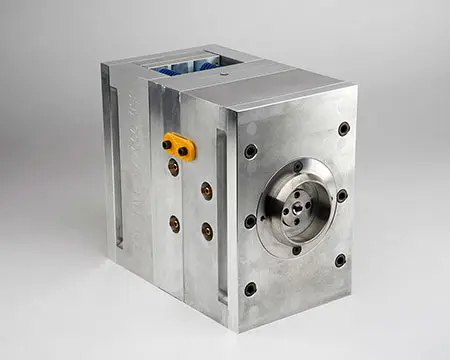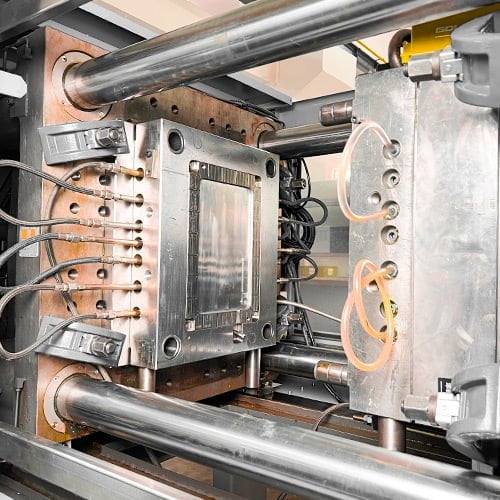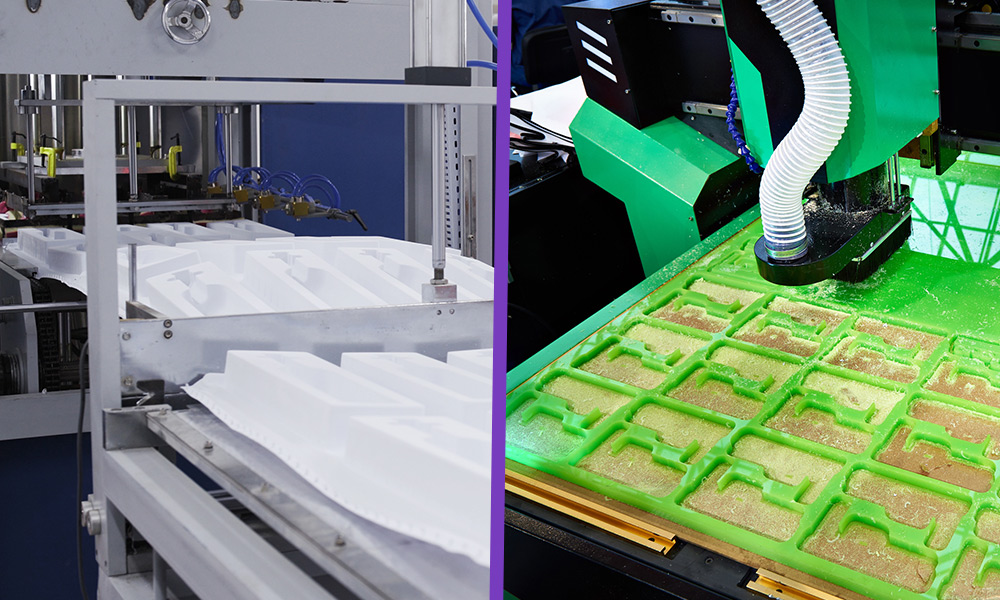Understanding the Basics of Plastic Shot Molding Processes
Plastic shot molding offers as a cornerstone of modern-day manufacturing, offering a methodical strategy to producing complicated parts with precision. This procedure not only includes the basic actions of melting and injecting products right into mold and mildews but likewise entails a nuanced understanding of numerous affecting factors, such as temperature and stress. As markets significantly demand effectiveness and top quality, the details of this technique become much more vital. Discovering these important aspects might expose exactly how even small modifications can bring about substantial improvements in manufacturing outcomes, questioning regarding the capacity for technology in this established process.
What Is Plastic Injection Molding?
Plastic injection molding is a commonly utilized production process that changes thermosetting and thermoplastic products into specific and complicated forms. This strategy is preferred for its capacity to create high quantities of the same get rid of extraordinary precision, making it an important technique in different sectors, including auto, consumer products, and clinical tools.
The process includes thawing the picked plastic material and infusing it right into a mold under high stress. The mold, created to the specifications of the desired component, enables the liquified plastic to take form as it strengthens and cools down. Once the material has solidified, the mold and mildew is opened up, and the ended up component is ejected.
Plastic injection molding uses several benefits, consisting of reduced waste, consistency in manufacturing, and the capability to integrate detailed layouts that might be challenging with other producing approaches. Furthermore, it sustains a wide array of products, each providing distinct buildings that can be customized for certain applications. As sectors remain to introduce, plastic shot molding stays at the center, enabling the development of innovative products that fulfill advancing customer needs.
The Injection Molding Process
The shot molding procedure is a sophisticated method that includes a number of essential stages to create top notch plastic components. At first, plastic pellets are fed into a warmed barrel where they are merged a viscous fluid. This molten plastic is then infused under high pressure into a precision-engineered mold, which forms the material right into the wanted kind.
When the mold is filled, the plastic is allowed to cool and solidify, taking the shape of the mold tooth cavity. Cooling time is crucial, as it affects the cycle time and the last residential properties of the shaped part. After enough cooling, the mold opens, and the completed component is ejected making use of ejector pins.

Materials Utilized in Shot Molding
Numerous products can be utilized in the shot molding process, each offering unique residential properties that satisfy particular applications. The most commonly utilized products include thermoplastics, thermosetting plastics, and elastomers.

Thermosetting plastics, like epoxy and phenolic resins, undergo a chemical adjustment during the healing process, causing a stiff, inflexible framework. These products are perfect for applications her response calling for high warmth resistance and structural integrity, usually utilized in electric insulators and automotive parts.
Elastomers, consisting of silicone and rubber-based materials, give adaptability and strength. Their distinct residential or commercial properties make them appropriate for applications that require elasticity, such as gaskets and seals.
In addition, specialized materials like bio-based plastics and composites are acquiring traction for their environmental advantages and improved efficiency attributes, expanding the range of shot molding applications in numerous markets. Comprehending the residential properties of these materials is important for selecting the ideal kind for certain projects.
Benefits of Injection Molding
Shot molding stands apart as an extremely efficient production procedure that uses countless benefits for generating intricate get rid of precision. One of one of the most significant benefits is the capability to create elaborate styles that would be tough or difficult to attain with various other approaches (Plastic Injection Molding). The procedure permits tight tolerances and comprehensive features, making sure high-quality components
Furthermore, injection molding is recognized for its fast manufacturing article source capacities, making it an ideal selection for high-volume manufacturing. Once the mold is produced, parts can be created promptly, lowering preparations and raising overall efficiency. This effectiveness not just lowers manufacturing costs yet also gives a competitive edge out there.
The flexibility of materials used in injection molding further improves its appeal. A large range of thermoplastics and thermosetting polymers can be used, enabling producers to select materials that ideal fulfill their particular requirements, consisting of strength, warm, and flexibility resistance.
Furthermore, the procedure minimizes waste, as excess material can commonly be recycled and reused. This sustainability facet contributes to a reduced ecological impact, making injection molding an accountable manufacturing selection. Overall, the advantages of injection molding make it a favored approach for many markets.
Aspects Influencing Item Quality
While many variables can affect product high quality in shot molding, understanding these elements is vital for accomplishing optimal outcomes. Key aspects include material choice, refining criteria, and mold and mildew layout.
Product selection plays an important function, as different polymers exhibit special residential or commercial properties that impact flowability, stamina, and thermal stability. Poor product option can cause defects such as warping or incomplete filling.
Handling specifications, consisting of temperature, cycle, and pressure time, must be carefully controlled. Variations in these setups can lead to variances in part dimensions and surface area coating. Excessively high temperature levels may cause destruction of the polymer, while insufficient pressure can result in short shots.
Mold layout is similarly essential, as it establishes the circulation of the molten plastic and the cooling process. next page Badly made molds might cause uneven air conditioning rates, causing residual stress and anxieties and dimensional errors.

Verdict
In verdict, plastic shot molding acts as an essential manufacturing procedure that makes it possible for the reliable production of premium parts. Proficiency of the injection molding process, consisting of the understanding of materials and the impact of numerous aspects on item high quality, is crucial for attaining optimum outcomes. The benefits of this approach, such as cost-effectiveness and style flexibility, further emphasize its value throughout several industries, strengthening its condition as a favored choice for high-volume manufacturing.
Plastic shot molding offers as a keystone of contemporary manufacturing, giving a methodical approach to generating complicated components with accuracy.Plastic injection molding supplies a number of advantages, consisting of minimized waste, uniformity in production, and the capacity to integrate intricate designs that might be challenging with other manufacturing methods (Plastic Injection Molding). As sectors continue to introduce, plastic injection molding stays at the forefront, making it possible for the advancement of advanced products that fulfill developing customer demands
The shot molding procedure is an advanced strategy that involves numerous essential stages to create high-quality plastic parts.In conclusion, plastic injection molding offers as a vital production process that enables the efficient manufacturing of premium parts.